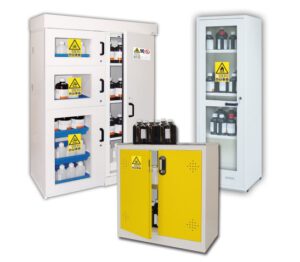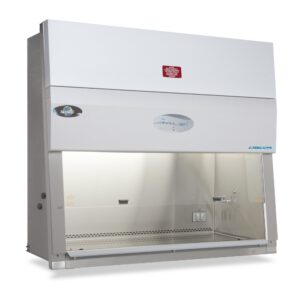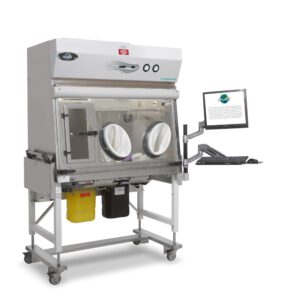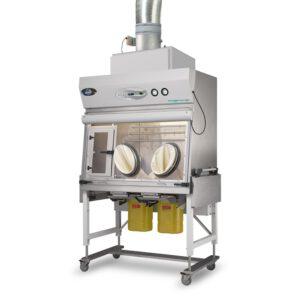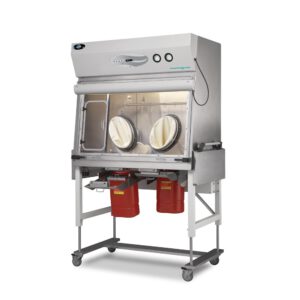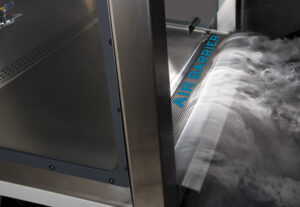BioSafety Cabinets
Biological Safety Cabinets
A biosafety cabinet (BSC)—also called a biological safety cabinet or microbiological safety cabinet—is an enclosed, ventilated laboratory workspace for safely working with materials contaminated with (or potentially contaminated with) pathogens requiring a defined biosafety level. Several different types of BSC exist, differentiated by the degree of biocontainment required.
Pharma Isolators
Pharmaceutical Isolator. An isolator is an arrangement of physical barriers that are integrated to the extent that the isolator can be sealed in order to carry out a routine leak test based on pressure to meet specified limits. Internally it provides a workspace, which is separated from the surrounding environment.
Animal Transfer Stations
An animal transfer station is a clean bench designed specifically for procedures that could stir up allergens, such as animal cage changing. As room air is pulled in through the grilles along the edge of the work surface, it passes through two filters – a prefilter that captures large particles and then a HEPA filter.
Laminar Work Flow Stations
A laminar flow cabinet or tissue culture hood is a carefully enclosed bench designed to prevent contamination of semiconductor wafers, biological samples, or any particle sensitive materials. Air is drawn through a HEPA filter and blown in a very smooth, laminar flow towards the user. Due to the direction of air flow, the sample is protected from the user but the user is not protected from the sample. The cabinet is usually made of stainless steel with no gaps or joints where spores might collect.[1]
Such hoods exist in both horizontal and vertical configurations, and there are many different types of cabinets with a variety of airflow patterns and acceptable uses.
Laminar flow cabinets may have a UV-C germicidal lamp to sterilize the interior and contents before usage to prevent contamination of the experiment. Germicidal lamps are usually kept on for fifteen minutes to sterilize the interior before the cabinet is used. The light must be switched off when the cabinet is being used, to limit exposure to skin and eyes as stray ultraviolet light emissions can cause cancer and cataracts.[2]
